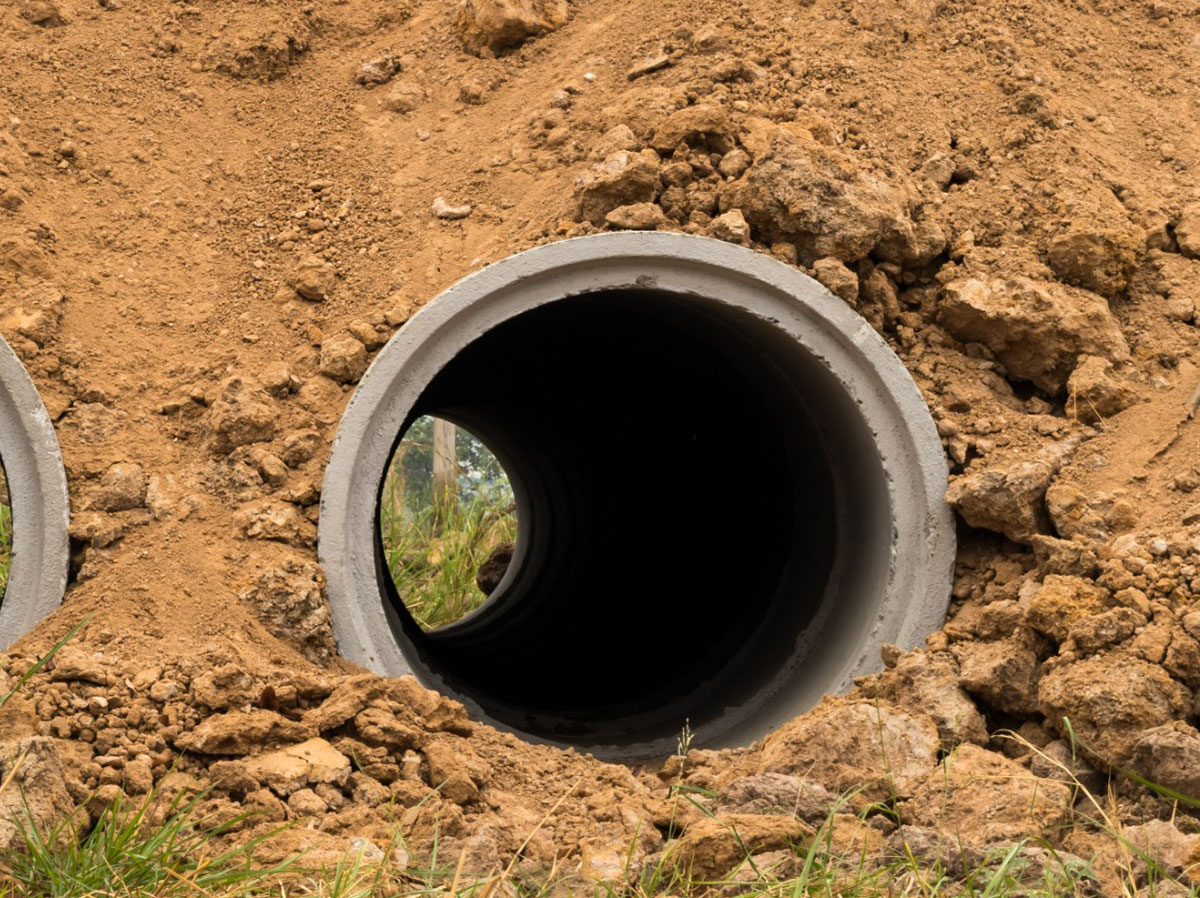Thorough Underbrush Clearing for Land Management
Wiki Article
Culvert Setup Made Easy: Step-by-Step Guide for Success
From picking the suitable culvert dimension to integrating correct drain measures, each action in the installation process plays a crucial duty in the functionality and long life of the culvert system. Stay tuned to discover the vital steps and considerations that can make culvert installment a seamless and effective endeavor.Choosing the Right Culvert Dimension
Selecting the ideal culvert size is critical for making sure effective water flow and architectural integrity in culvert installment projects - Pad Construction. The size of the culvert straight affects the circulation capacity of water with the structure. A culvert that is as well tiny can lead to flooding and overflow, while one that is as well huge may cause decreased water velocity, possibly creating sediment accumulation and obstructionsTo establish the ideal culvert dimension, elements such as the watershed area, optimal flow rates, and hydraulic performance need to be thoroughly taken into consideration. Estimations based on these criteria assist in picking a dimension that can sufficiently manage the predicted water volume while reducing the danger of obstructions and architectural failing.
It is vital to seek advice from engineering guidelines and standards to guarantee that the selected culvert dimension satisfies the project requirements and local policies (Pad Construction). By choosing the appropriate culvert size, job managers can optimize water flow, avoid potential problems, and enhance the overall performance and long life of the culvert setup
Preparing the Installment Site
Effective culvert installment demands meticulous preparation of the installation website to guarantee optimal structural assistance and functionality. Before starting the setup procedure, it is important to get rid of the site of any particles, vegetation, or blockages that could hamper the culvert's placement.Moreover, it is very important to consider factors such as soil composition, groundwater levels, and environmental influences when preparing the installment site. Conducting a complete site analysis can aid determine any possible obstacles or dangers that might affect the culvert's performance. By making the effort to prepare the setup site properly, you can assist guarantee a successful culvert installation that meets structural requirements and makes sure long-term functionality.
Placing the Culvert Correctly

The quality at which the culvert is positioned is critical for preserving a correct incline for water circulation. Additionally, the culvert should be oriented correctly to guarantee that the inlet and outlet are in the proper locations. Pad Construction.
Backfilling and Compacting the Soil
Appropriate backfilling and compaction of the soil around the culvert is necessary to make certain stability and prevent potential issues in the future. Once the culvert is correctly put, the next essential step is to backfill the area around it with suitable material. The backfill product ought to be devoid of rocks, particles, and organic matter to stay clear of damage to the culvert. It is recommended to utilize granular material such investigate this site as sand or gravel for backfilling, as it gives excellent drain and compaction buildings.After placing the backfill material, it is necessary to small it in layers of consistent density. Making use of a compactor or a mechanical meddle, compact the soil carefully to stay clear of harming the culvert. Compaction aids in reducing the chances of negotiation and makes sure uniform assistance around the culvert. It is important to compact the dirt evenly on all sides of the culvert to keep its structural integrity.
Proper backfilling and compaction not just provide security to the culvert but likewise help in protecting against soil erosion and preserving the long life of the culvert click here now system.
Guaranteeing Correct Drainage Combination
Incorporating efficient water drainage solutions plays a critical role in the total functionality and durability of culvert installments. Proper drain assimilation is vital for handling water circulation, protecting against erosion, and guaranteeing the architectural stability of the culvert system. To attain this, it is important to create a detailed water drainage strategy that considers elements such as the quantity of water anticipated, the topography of the location, and the sort of dirt existing.
Furthermore, incorporating functions like disintegration control procedures, such as riprap or plants, can additionally enhance the effectiveness of the water drainage system. By carefully intending and executing these drain remedies, culvert installations can function successfully and withstand the examination web of time.
Verdict
In verdict, appropriate culvert setup is important for maintaining efficient water drainage systems. By picking the ideal culvert size, preparing the installation website, positioning the culvert correctly, backfilling and condensing the soil, and making certain appropriate drainage assimilation, success can be attained. Complying with these steps will certainly aid make sure the longevity and performance of the culvert, inevitably adding to the overall success of the water drainage system.Report this wiki page